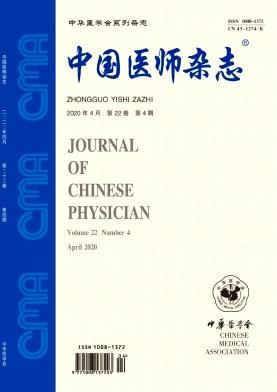Preliminary evaluation of MR diffusion tensor imaging in children with acute renal injury
Q4 Medicine
引用次数: 0
Abstract
Objective To investigate the study of magnetic resonance (MR) diffusion tensor imaging in children with acute kidney injury, and further improve the clinical research level of early diagnosis of acute kidney injury (AKI). Methods Twenty-two children who met the clinical AKI diagnostic criteria were collected from the Children's Hospital of Hunan Province. Twenty-three children volunteers were collected as the control group. The anisotropy fraction (FA) and mean diffusion coefficient (ADC) values of the renal cortex and medulla of all the tested children were detected, and the serum creatinine value and disease test results of children with AKI were collected. Spearman correlation analysis was used to analyze the correlation between the renal and medullary ADC values and FA values and serum creatinine values in the children with AKI. Results There were no significant differences in the FA, ADC values of left and right renal cortex and medulla of case group (P>0.05). There were no significant differences in the FA, ADC values of left and right renal cortex and medulla of control group (P>0.05). The medullary FA value, cortical FA and ADC value of the children with AKI were significantly lower than those of normal children (P 0.05). The medullary FA value and cortical ADC value of AKI patients were negatively correlated with serum creatinine value (r=-0.868, -0.436, P<0.05), and there was no correlation between cortical FA, medullary ADC and serum creatinine in the rest of the children. Conclusions As a non-invasive imaging method, diffusion tensor imaging (DTI) can reflect the early renal damage of AKI and has potential application value for clinical diagnosis of AKI. Key words: Diffusion tensor imaging; Magnetic resonance imaging; Acute kidney injury; Child磁共振弥散张量成像在儿童急性肾损伤中的初步评价
目的探讨磁共振(MR)弥散张量成像在儿童急性肾损伤中的应用,进一步提高急性肾损伤(AKI)早期诊断的临床研究水平。方法收集湖南省儿童医院符合AKI临床诊断标准的患儿22例。选取23名儿童志愿者作为对照组。检测所有患儿肾皮质和肾髓质的各向异性分数(FA)和平均扩散系数(ADC)值,收集AKI患儿血清肌酐值和疾病检查结果。采用Spearman相关分析分析AKI患儿肾、髓质ADC值与FA值、血清肌酐值的相关性。结果病例组左、右肾皮质、髓质的FA、ADC值比较,差异均无统计学意义(P>0.05)。对照组左、右肾皮质和肾髓质的FA、ADC值差异无统计学意义(P>0.05)。AKI患儿髓质FA值、皮质FA值、ADC值均显著低于正常儿童(P < 0.05)。AKI患者髓质FA值、皮质ADC值与血清肌酐值呈负相关(r=-0.868、-0.436,P<0.05),其余患儿皮质FA值、髓质ADC值与血清肌酐无相关性。结论弥散张量成像(diffusion tensor imaging, DTI)作为一种无创成像方法,能反映AKI的早期肾损害,对AKI的临床诊断具有潜在的应用价值。关键词:扩散张量成像;磁共振成像;急性肾损伤;孩子
本文章由计算机程序翻译,如有差异,请以英文原文为准。
求助全文
约1分钟内获得全文
求助全文

 求助内容:
求助内容: 应助结果提醒方式:
应助结果提醒方式:


